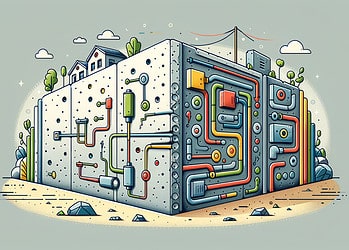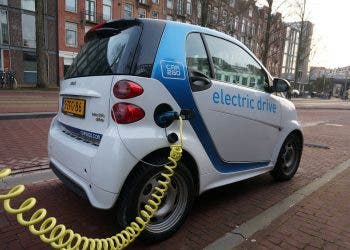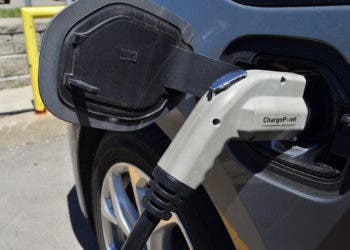
It takes just minutes to charge a solid-state battery. That might not sound like a big deal until you consider that the lithium-ion battery in your phone or electric car can take nearly an hour to reach 80% charge.
In a comprehensive new review, researchers from the University of California, Riverside, detail the growing promise — and remaining pitfalls — of solid-state batteries, SSBs.
“Solid-state batteries are moving closer to reality every day,” says Cengiz S. Ozkan, a mechanical engineering professor and co-lead author of the study. “Our review shows how far the science has come and what steps are needed next to make these batteries available for everyday use.”
A Leap in Energy Chemistry

Solid-state batteries function much like their liquid-electrolyte counterparts in the sense that they move lithium ions between anode and cathode during charging and discharging. But instead of using a flammable liquid (an electrolyte) to ferry those ions, SSBs rely on solid materials: ceramics, polymers, or sulfide-based compounds that are chemically stable, non-volatile, and highly efficient.
This change does more than eliminate fire risks. Solid materials also make it possible to use pure lithium metal as an anode — an ultra-thin layer that stores more energy per gram than conventional graphite anodes. That translates to lighter batteries with higher capacity and longer lifespans.
“By removing the liquid and using stable solid materials instead, we can safely push more electricity into the battery at once, without the risks of overheating or fires,” Ozkan explains.
Where today’s lithium-ion batteries can degrade after just 1,000 charge cycles, solid-state batteries have been shown to maintain over 90% of their capacity even after 5,000 cycles. That could mean a battery life of 15–20 years, doubling the typical lifespan for electric vehicles.
Faster Charging, Smaller Footprint

Speed is another area where solid-state batteries shine. The review highlights that new designs can reach 80% charge in 12 minutes — or even as little as three — compared to the 30–45 minutes needed by lithium-ion cells.
Every battery is limited by the critical current density (CCD), which determines how quickly a battery can safely accept charge. Although SSBs currently lag in CCD compared to lithium-ion batteries due to lower ionic conductivity and interfacial resistance, recent advances are closing the gap.
One standout material group (sulfide-based solid electrolytes) has ionic conductivities approaching those of liquid electrolytes, allowing for faster ion transport. As the paper notes, compounds like Li₁₀GeP₂S₁₂ (LGPS) have conductivities as high as 12 mS/cm, a figure once considered out of reach for solid materials.
Another plus: solid-state cells don’t need bulky cooling systems since they operate at lower and more stable temperatures. That makes them lighter and more space-efficient. That’s important for both electric vehicles and aerospace applications, where every gram and cubic centimeter counts.
A Battery Built for Outer Space?
Because they can withstand extreme temperatures and radiation, these batteries may prove most useful in powering spacecraft and planetary bases.
“Due to their thermal and chemical stability, these batteries are better suited to withstand extreme temperatures and radiation conditions in outer space,” says Ozkan. “They’re also able to store more power in less space, which is critical for missions where every cubic centimeter counts.”
Some designs even remain stable under vacuum and across a temperature range from −40°C to 120°C. One design from Hitachi Zosen passed a nail penetration test without igniting — something liquid batteries still struggle with.
One of the major hurdles facing solid-state battery development has been understanding what happens inside them during operation. That’s where the latest diagnostic tools come in.
“These imaging tools are like an MRI for batteries,” Ozkan says. “They let us watch the battery’s vital signs and make smarter design choices.”
Techniques like neutron imaging, X-ray tomography, and transmission electron microscopy allow scientists to watch in real-time as ions flow, structures shift, and degradation begins. This includes the formation of dendrites, the needle-like lithium filaments that can short-circuit batteries. While dendrites are less of a risk in SSBs, they still occur, particularly at grain boundaries in the solid electrolyte. But the mechanisms are more predictable, which opens the door for targeted solutions.
Some researchers, for example, have begun using sintering processes to densify electrolyte grains and reduce dendrite pathways. Others are exploring novel materials, like 3D honeycomb anode structures that flex with expansion and contraction to prevent cracking.
What’s Holding Us Back?
Despite the progress, commercialization remains a challenge. SSBs are still expensive and difficult to manufacture at scale. Materials must be extremely pure, processed under pressure, and often protected from oxygen and moisture.
Interface problems — where the solid layers meet — still plague performance. Poor contact and chemical reactions between the electrolyte and electrode can lower conductivity and shorten battery life.
To solve these problems, scientists are turning to advanced manufacturing techniques and computational modeling. Adding buffer layers, experimenting with doped materials, and tailoring sintering conditions are just a few of the strategies in play.
There are also environmental considerations. Some sulfide electrolytes, when heated, release hazardous gases like hydrogen sulfide (H₂S). And while SSBs promise better recyclability than liquid batteries, many solid electrolyte chemistries still lack sustainable recovery solutions.
Where Are We Now?
Companies like Toyota, Samsung, QuantumScape, and Solid Power are investing heavily in SSB tech. One Chinese firm, Qing Tao Energy, claims to be producing solid-state batteries at 100 MWh per year and expanding toward 10 GWh. Still, mass-market readiness could be years away.
The UC Riverside team aims to accelerate this timeline. Their paper outlines a roadmap that focuses on optimizing interfaces, improving manufacturing, and better understanding material behaviors through diagnostics.
“Traditional lithium-ion batteries, while revolutionary, are reaching their performance and safety limits,” Ozkan says. “SSBs offer a pathway to meet the growing demands of our electrified future.”
Solid-state batteries are inching closer to transforming how we power our world — from cars to computers, and maybe even to Mars. But for all their promise, they still require careful engineering, massive investment, and some fundamental science to be fully understood and implemented.
The new review appears in Nano Energy.






